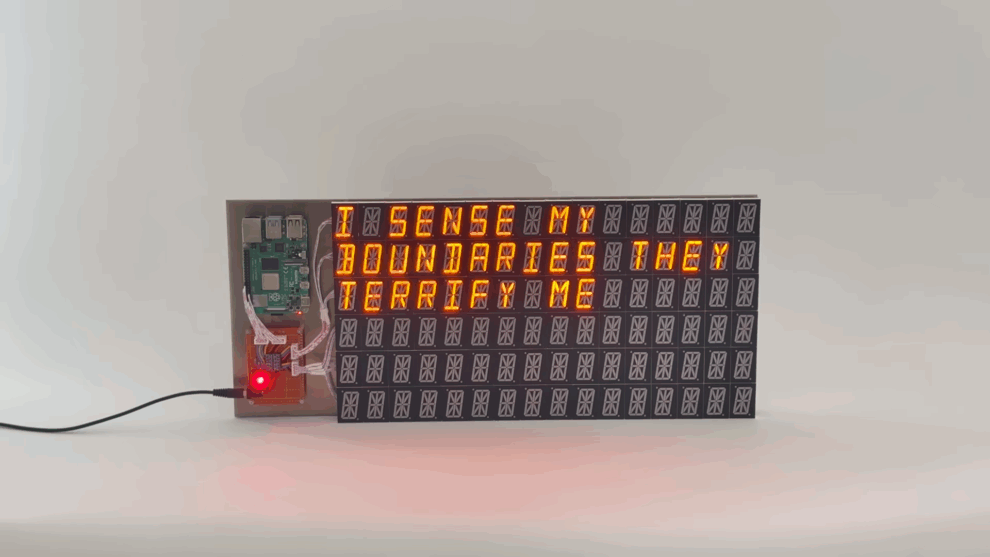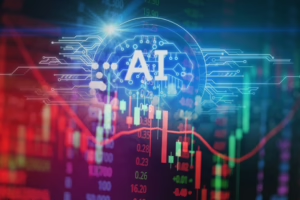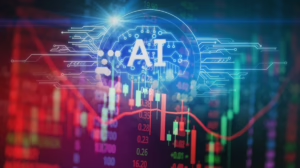AI Art Installation Swaps Diffusion for Reflection
Introduction
In the evolving landscape of contemporary art, artificial intelligence (AI) has emerged as both a tool and a medium for artistic expression. Recently, a groundbreaking AI art installation has caught the attention of critics and enthusiasts alike: “Reflections: The AI Mirror.” This installation diverges from traditional approaches by favoring reflection—both literal and metaphorical—over the diffusion of images and ideas often associated with AI-generated art. This article delves deep into the conceptual frameworks, artistic implications, and societal conversations sparked by this installation, shedding light on how it serves as a critical commentary on our relationship with technology and creativity.
The Concept of Reflection in Art
Reflection in art can be understood on multiple levels. On a superficial level, it refers to the literal mirroring of images, surfaces, and ideas. However, the concept extends far deeper, inviting introspection and self-examination. In the case of “Reflections: The AI Mirror," the installation uses AI algorithms to create a dynamic interface that engages viewers in a dialogue, prompting them to reflect on their own identities, choices, and the role of technology in their lives.
Historical Context
Art has long served as a mirror to society, reflecting cultural, political, and personal narratives. For instance, the Dada movement of the early 20th century sought to disrupt traditional artistic norms by challenging perceptions of reality. Similarly, “Reflections” harnesses AI to question the role of technology in contemporary life, steering clear of the vivid imagery and chaotic diffusion often associated with generative art.
The Technical Underpinning
At its core, “Reflections: The AI Mirror” employs advanced machine learning algorithms to analyze and interpret viewer interactions. Instead of merely generating art based on pre-existing datasets, the installation captures the essence of each individual present, creating a unique experience tailored to their physical presence and emotional responses.
Machine Learning and Interactivity
Machine learning models here incorporate facial recognition and affective computing, allowing the installation to adapt in real time. When a viewer approaches, the AI assesses facial expressions, gestures, and even voice intonations, forming a narrative that reflects the individual’s emotional state. This blend of technology and art invites viewers to engage in a more personal and intimate dialogue.
Exploring the Artistic Elements
The installation itself is a multi-faceted experience, comprising various layers of interaction, visualization, and soundscapes. Central to the experience is a large, reflective OLED screen, surrounded by immersive audio elements that respond to viewer interactions. As the audience moves through the space, the artwork morphs organically, creating a tapestry of visual and auditory experiences.
Visual Interaction
The visual component transitions seamlessly between abstract visuals and representational forms, often referencing cultural archetypes, historical figures, or personal memories. This interplay encourages viewers to confront their perceptions of identity, questioning how much of themselves they project onto the artwork.
Auditory Elements
Accompanying the visuals is a soundscape generated in real time. The algorithm synthesizes musical fragments and ambient sounds that echo the emotional undercurrents observed in the viewers’ expressions. This layered auditory experience further immerses individuals, inviting them to tune into their own feelings as they navigate the installation.
The Thematic Significance
“Reflections: The AI Mirror" delves into several key themes related to identity, technology, and the nature of art. Through its intricate blend of interactivity and introspection, the installation poses critical questions about the future of creativity in an age dominated by digital and AI technologies.
Identity Exploration
In today’s fast-paced digital age, identity is often perceived as fluid and multi-faceted. “Reflections” captures this essence by allowing viewers to engage with their identities in real-time. The shifting visuals and sounds serve as a reminder that identity is not static but continuously evolving—a reflection shaped by experience, environment, and technology.
Technology and Humanity
The installation also prompts reflection on the merging boundaries between technology and humanity. By showcasing how AI can interpret human emotions and creativity, it raises ethical questions about authorship, authenticity, and the role of human agency in art. Are we mere consumers of this technology, or can we reclaim agency through introspection and self-awareness?
Reactions from the Art Community
The reception of "Reflections: The AI Mirror" within the art community has been overwhelmingly positive, highlighting the potential for AI to foster meaningful dialogues about identity and society. Critics have lauded its innovative approach, appreciative of how it encourages viewers to engage not only with the art but also with their own inner worlds.
Artist Commentary
The creators of the installation, a collaborative team of technologists and artists, emphasize their intention to provoke thought and discussion. “We wanted to create an experience that goes beyond the visual,” one co-creator stated in a recent interview. “By invoking reflection, we hope to inspire conversations about who we are in an increasingly digital society” [modern_footnote_source_link].
Viewer Experiences
Visitor feedback has also been enthusiastic, with many describing the installation as transformative. People often leave feeling a deeper sense of self-awareness, having engaged emotionally with the work. This indicates that the installation’s focus on reflection resonates with audiences, bridging the gap between technology and personal experience.
Challenges and Criticisms
Despite its acclaim, “Reflections: The AI Mirror” has not been without its challenges and criticisms. Some argue that while the installation promotes introspection, it might also heighten feelings of anxiety and self-consciousness.
The Risk of Surveillance
Critics have raised concerns about the ethical implications of using facial recognition technology within art. Questions surrounding privacy and consent loom large, as participants may feel uncomfortable with being observed and analyzed by AI algorithms. This points to a broader societal issue regarding surveillance culture, where individuals grapple with the balance between technology and autonomy.
The Nature of Art
Additionally, debates regarding the nature of art in the context of AI persist. Traditionalists may assert that the reliance on algorithms diminishes the essence of creativity, arguing that true art should stem purely from human experience and emotion. This ongoing discourse challenges the art community to redefine what constitutes creativity and authorship in the digital age.
The Future of AI in Art
Looking ahead, the implications of installations like “Reflections: The AI Mirror” are profound, suggesting a new frontier for artistic exploration. As technology continues to evolve, artists are presented with unprecedented opportunities to engage audiences in meaningful, reflective ways.
Collecting Personal Narratives
Future iterations of AI art installations may harness biographical data, storytelling techniques, and psychological modeling to further personalize viewer experiences. By creating more nuanced narratives, artists can elevate the dialog around identity and mental health, providing therapeutic benefits alongside artistic expression.
Collaborative Experiences
Moreover, the potential for collective experiences within AI art installations could foster community engagement. Environments where multiple interactions occur simultaneously may yield richer discussions about shared experiences, connecting individuals on a deeper level.
Conclusion
“Reflections: The AI Mirror” stands as a testament to the power of art to incite thought and reflection in our rapidly changing world. By swapping diffusion for reflection, this installation challenges us to confront our identities, navigate the complexities of technology, and engage in meaningful dialogues about our place within an increasingly AI-driven society. As we embrace the future, it becomes imperative to not only celebrate the innovations that AI brings to art but also to critically examine its implications, affirming our humanity amid technological advancements.
References
- [modern_footnote_source_link] – Link to an article interweaving themes from various sources, providing scholarly context and insights regarding AI in contemporary art.
This exploration of "Reflections: The AI Mirror" cultivates a rich discourse around identity, technology, and the very nature of creativity, inviting us to pause and reflect on our unique narratives amid the convergence of art and artificial intelligence.
Click here and see the Source


























Add Comment